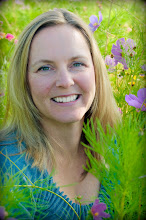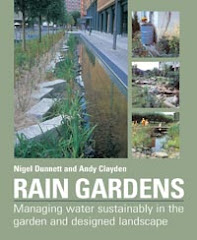Wait, but isn't it just March? Yes and this is one of the most unusual winters we've had in a long time but rest assured, the freezing and snowy weather will return, and hopefully before we all become too accustomed to these unseasonally warm days. Though, I am getting very, very accustomed to these nice days and the temptation to forget cold days is getting more and more difficult to resist. But do remember, the only predictable thing about Central Oregon's weather is its unpredictability.
With all of that in mind, it is time to begin a bit of the spring clean up. That means its time to trim back all your ornamental grasses and perennials and to get on top of your weeds. There is a reason weeds are weeds, they are the most tenacious little buggers. How they could have survived that deep freeze we had in December I don't know, but I'm predicting this will be a bad year for weeds (good for them, bad for us). Make sure to stay on top of them because with this lovely spring weather they are really get a good start to the growing season.
My favorite weeding tool is the Hula Hoe. It cuts the bottom of the roots of the young weeds and scraps along through the soil rather well and does a great job in pea gravel. Just remember to get at the weeds while they are young and then it will be a much easier job.
Here is a picture of the Hula Hoe:
For cutting back your spent perennials such as your daisies, iris's, and the like, cut them back quite close to the root crown to allow room for the new growth. For your grasses, cut them back leaving 1 to 4 inches of old grass depending on the size of your grass. Idaho Fescue grass can be sheared back rather shortly, a string trimmer works great for this job. Karl Foerster grass is a larger grass and should have a few inches of old grass left. You can use a hedge or string trimmer for the bigger grasses but just be careful not to let the string get tangled in the tall grass, that's a mess.
It is also time to prune your shrubs. The first steps to pruning (same for trees) is to prune out any dead, broken or diseased branches. Then take a look at the overall structure and see if it needs to be opened up. Some shrubs like to be prune well every year, but others can go a few years without any serious pruning.
The spring blooming shrubs like Lilac should be pruned right when their flowers begin to fade since they form buds on old growth. Redtwig Dogwoods are mainly grown for their lovely red color during the winter time, and that good color comes from new growth, so prune those now. Prune out up to one third of the oldest branches down to the ground for the Dogwoods.
A good website for general pruning techniques can be found at Sunset Magazine Pruning Techniques ( I love Sunset Magazine!).
Now that you have your weeds under control and your plants cut back, it's time to add your yearly application of compost or bark mulch to help suppress weeds, retain moisture, and if using compost, add nutrients to the soil.
If you have fewer plants, just spread the compost around the base of the plants, but if you have a more densely packed area, spread the compost all around. Remember that plants get their nourishment from the soil and the healthier your soil, the healthier your plants. Compost is a better option for overall health of the garden. Synthetic fertilizers are temporary fixes and create fertilizer addicts out of plants and deplete the soil over time. Using compost and organic fertilizers works to create a whole web of happiness from the worms, to the insects, birds and bees who all work in unison to help you create a healthy and happy garden.
If you have more specific questions about your landscape, or would like to talk about getting a design, please do not hesitate to contact me. Send me an email from my profile page. Happy gardening!










Yay! So good to see a new post! I have been thinking we needed one with spring coming along... *smile*
ReplyDelete